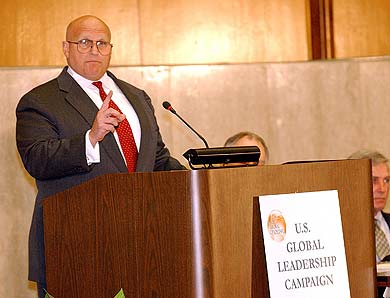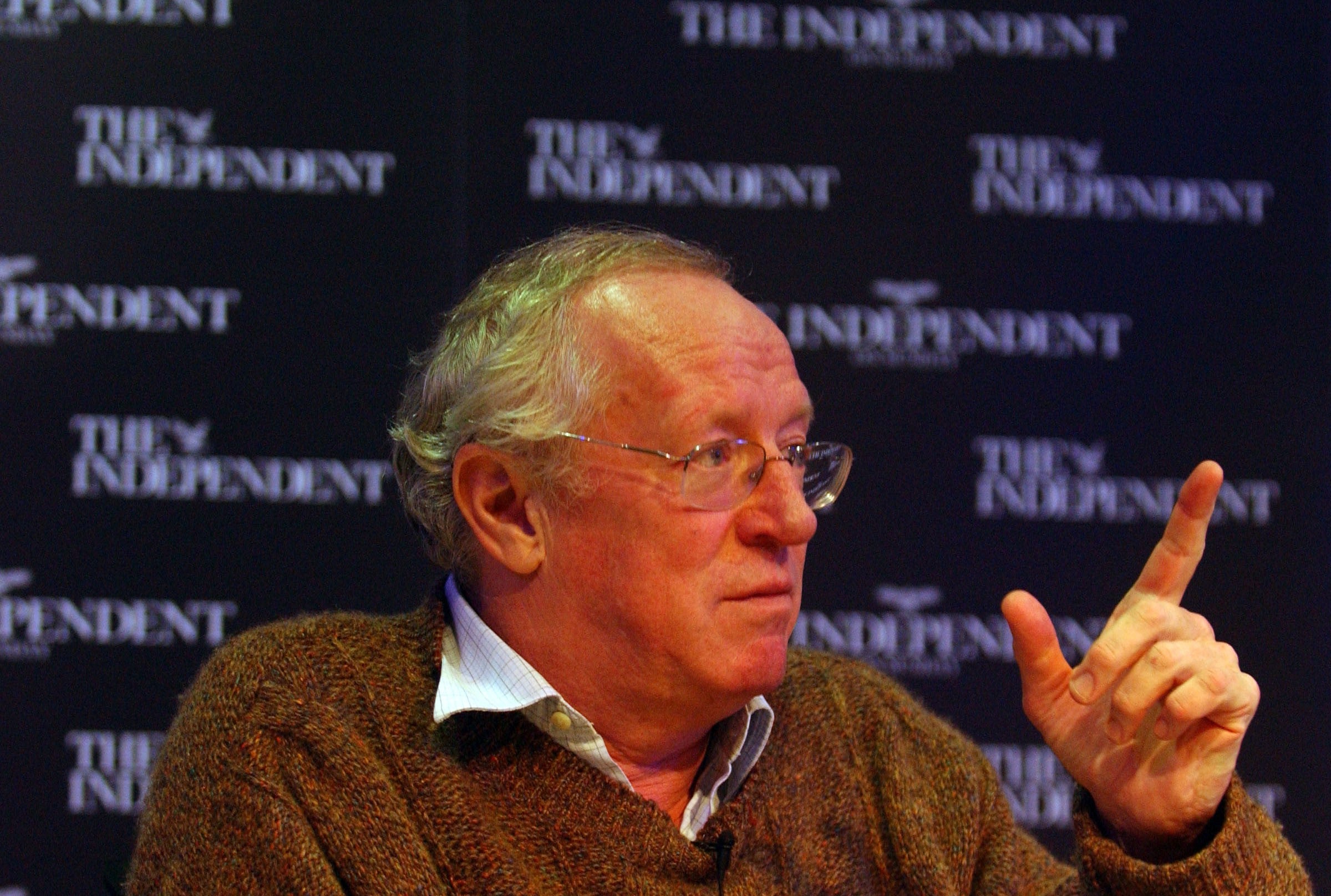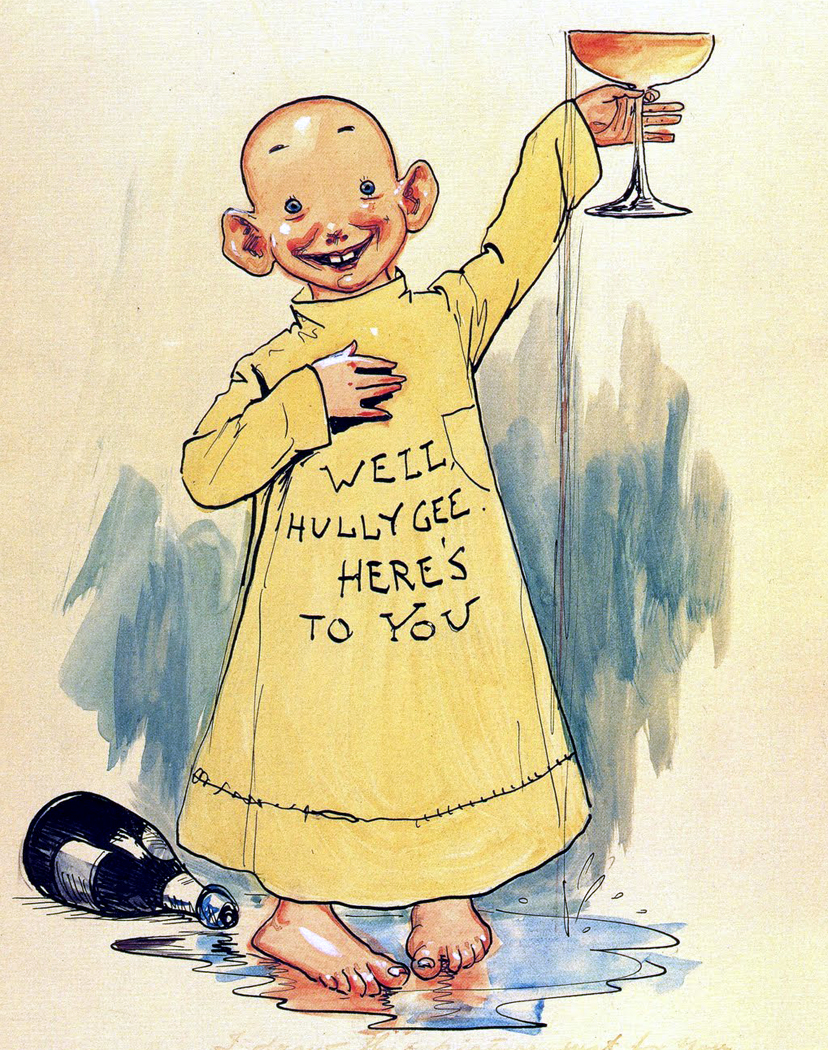
Not long after George W. Bush invaded Iraq and Afghanistan, a number of leftists signed up with his “war on terror”. Many added their names to the 2006 Euston Manifesto that proclaimed: “Terrorism inspired by Islamist ideology is widespread today. It threatens democratic values and the lives and freedoms of people in many countries.” Among the most prominent supporters of Bush’s wars was Christopher Hitchens who wrote an article for Slate in 2007 not only defending the use of the term Islamofascism but endorsed ultra-rightist David Horowitz’s attempt to organize “Islamofascism Awareness Week” on American campuses. Most on the left disowned Hitchens and company because the USA was making war, as it does in most cases.
But occasionally, the “war on terror” is prosecuted by another super-power. When the Arab Spring came to Syria in March 2011, you found the same kind of Eustonian willingness to support military intervention against Islamic fanatics but this time it was on behalf of Vladimir Putin who was supposedly defending a sovereign government under attack from bearded, sharia-law supporting Salafists. Hitchens defended all sorts of war crimes against such people, writing “Cluster bombs are perhaps not good in themselves, but when they are dropped on identifiable concentrations of Taliban troops, they do have a heartening effect.” Meanwhile, latter-day versions of Hitchens make the same kinds of excuses for barrel bombs and absolve Bashar al-Assad of all chemical attacks. When it comes to “defeating al-Qaeda”, anything goes.
While Max Blumenthal is certainly not Christopher Hitchens’s equal either as a writer or an intellectual, he certainly aspires to be Christopher Hitchens of today. When Hitchens made up his mind to back Bush’s wars, he took great pains to explain his evolution. By contrast, Blumenthal has never said a single word about his own mutation. For example, in July 2012, he wrote a resignation letter to Al-Akhbar because he was fed up with the pro-Assad newspaper:
I was forced to conclude that unless I was prepared to spend endless stores of energy jousting with Assad apologists, I was merely providing them cover by keeping my name and reputation associated with Al Akhbar. More importantly, I decided that if I kept quiet any longer, I would be betraying my principles and those of the people who have encouraged and inspired me over the years. There is simply no excuse for me to remain involved for another day with such a morally compromised outlet.
Not long after Blumenthal went to a banquet to celebrate RT.com’s anniversary, all such articles went into a memory hole. Instead, he became one of Assad’s biggest supporters on the left, joined by Ben Norton who, while a mutant himself, at least offered a lame explanation. Can such conversions be explained by Kremlin gold? I think such speculation is unwise, especially since it doesn’t account for genuine reconsiderations of one’s political views. Assuming that Blumenthal’s were genuine, you only wonder why he never bothered to account for them unless he worried that they would sound as lame as Norton’s.
This year Verso published Blumenthal’s “The Management of Savagery: How America’s National Security State Fueled the Rise of Al Qaeda, ISIS, and Donald Trump”. While the first half of the book covers the obvious horrors of American intervention in Iraq and Afghanistan, the underlying goal is to demonstrate that Syria is just another “regime change” operation that the author hopes to forestall. You’d think that after 8 years with the regime still intact, it might be obvious that this was never the goal but let’s leave that aside. Since there is no reason for this review to question the chapters on Iraq and Afghanistan upon which we are in agreement, I will focus on the second half of the book that basically reprises what Blumenthal has written after his “road to Damascus” conversion.
One of the more dramatic examples of Blumenthal I versus Blumenthal II can be found in the beginning of Chapter 9, titled “Collateral Damage, Indirect Benefits” in which he recounts a visit to the Zaatari refugee camp in 2013. After a few words describing the miserable conditions, he concludes this passage with a leitmotif found throughout his book, namely that Assad’s opponents were jihadists:
Among the few able to leave were two young men I witnessed walking past a Jordanian intelligence station toward the Syrian border. When my guide asked them where they were going, one responded simply, “To make jihad.”
The article he wrote for Nation Magazine in 2013 after his visit to Zaatari had the opposite intention, namely to help his readers understand why refugees call for American intervention. Titled “We Just Wish for the Hit to Put an End to the Massacres”, there’s not a single word about jihadists. Instead, there is this:
None of the dozens of adults I interviewed in the camp would allow me to report their full names or photograph their faces. If they return to Syria with the regime of President Bashar al-Assad still intact, they fear brutal recriminations. Many have already survived torture, escaped from prisons or defected from Assad’s army. “With all the bloodshed, the killing of people who did not even join the resistance, Bashar only wanted to teach us one lesson: That we are completely weak and he is our god,” a woman from Dara’a in her early 60s told me.
The next step after portraying Zaatari as a viper’s nest of jihadists is to cite a Northeastern professor named Max Abrahms who led a polling team to discover why Syrians became refugees. It revealed that most were fleeing Islamic terrorists rather than the dictatorship. In 2015 and 2016, Abrahms interviewed 130 refugees and discovered that a mere 16 percent blamed Assad for their flight.
Abrahms is a member of The Washington Institute for Near East Policy that cheered on George W. Bush’s invasion of Iraq as well as Israel’s nonstop war on the Palestinians. Writing for National Review, Abrahms defended the IDF’s brutal crackdown on the West Bank in 2002, calling it language that the terrorists could understand.
In 2010, Blumenthal blasted the very same Washington Institute for Near East Policy for helping to launch an Islamophobic crusade. Apparently, it is acceptable to take Abrahms at his word when it is the Kremlin rather than Washington dropping the bombs. It also helps that this former West Point lecturer on terrorism concurs with Blumenthal’s demonization of Syrian rebels. When Abrahms wrote in Foreign Affairs that “Assad’s main enemies in Syria have been dangerous extremists, no matter how many governments fund them, train them, or arm them,” he was on Blumenthal’s side even if his politics were indistinguishable from Netanyahu’s.
Perhaps the only hint that Blumenthal was ever opposed to Assad comes in the beginning of Chapter 6 (The Next Dirty War) where the first paragraph alludes to Assad’s “repression and cronyism”, as well as the neoliberal policies associated with Assad’s first cousin, the billionaire Rami Makhlouf. Once that paragraph is out of the way, he can concentrate on the main purpose of the chapter which is to demonstrate that early on the revolt used sectarian violence against the well-meaning President, who despite all these sins, was supported by 55 percent of the population according to a Qatar poll taken in 2012. The poll was exploited in a broad propaganda offensive that year to legitimize Assad. While his 88.7 vote totals in 2014 might raise eyebrows, how can you question the findings of a Qatari poll? After all, Qatar was widely regarded as an Islamist state.
There was a sleight-of-hand in Blumenthal’s reference to 55 percent of Syrians backing Assad. Fifty-five percent of Syrians would be about 11 million people but it turns out that only 97 took part in the poll since it was limited to those who had Internet access and a deliberately small sampling at that. With 53 among the 97 Syrians reached saying they did not want him to resign (not exactly a ringing endorsement), it hardly buttresses Blumenthal’s case for Assad. Perhaps the best opinion poll would have been free elections but that would have risked the family dynasty being ousted and thus strictly out of the question. As his supporters’ graffiti made clear, the choice was either Assad or burning down the country. It turned out that they got both.
To make the connection between the Taliban and Syrian rebels, Blumenthal wastes no time. Immediately after the perfunctory reference to class divisions in Syria, he introduces us to a Salafist bogeyman who is supposed to symbolize everybody opposed to the regime, namely Anas al-Ayrout, a cleric in the seaport town of Baniyas who was opposed to mixed-gender classes and called for ending the ban on niqab, the full-face veil.
For a more balanced treatment of Baniyas, I recommend “Cities in Revolution: Baniyas”, a 34-page report that presents an entirely different portrait of al-Ayrout. Despite the fact that he held conservative religious views, he was not a sectarian. In one of the first protests in Baniyas, this was his role:
The demonstration was unorganized at first, and within a few moments, Maher al Masri, climbed on the shoulders of his freedom and began chanting as well, with people falling in behind him. The protesters moved unbothered until they reached the bus depot of the city. At that point, a number of protesters attacked an Alawite bus worker and damaged his truck. Ayrout, however, intervened immediately and ensured reparations were paid to the bus owner. Ayrout then emerged chanting, “Sunni, Alawi, we all want freedom” and the protesters repeated after him until they reached the intelligence security headquarters in the city.
What was the response of the dictatorship’s supporters? A few days later, a pro-Assad militia stormed into the town and carried out mass arrests. The last mass protest took place on May 5, 2011. Led by women, they were confronted by the military and intelligence forces who shot many peaceful protestors. Dozens were arrested, many of whom are still detained if they were fortunate enough not to be murdered in prison. The town remained restive. In the next round of protests in 2013, the dictatorship went even further. According to the UN, between 300 to 450 people were killed. None of this is reflected in Blumenthal’s chapter. Instead, he reports on how a single Alawite fruit vendor was killed in Baniyas—a sad but not unexpected reaction to the bloodbath Sunnis suffered. Blumenthal was simply repackaging what Syrian media was saying at the time, namely that the military was on a mission to clear out “the terrorists”.
After repeated slaughters such as this, the opposition to Assad finally saw the need to take up arms to defend the mass movement. Once weaponry became available from Turkey, Saudi Arabia, and the Pentagon, a “proxy war” erupted that, according to Blumenthal, “began to look more and more like Afghanistan in the 1980s.” This is the central argument of “Management of Savagery”. Washington supposedly sought to replace Assad with a “pliant, pro-Western Sunni government, like the kind that ruled Jordan.”
Since it is clear that Blumenthal is unfamiliar with Marxism, the failure to identify the class alignments in Syria should be expected. Contrary to his analogy with Jordan (or Iraq for that matter), there was no significant social support for “regime change” among the country’s elite. The Sunni bourgeoisie was one of the mainstays of an economic and political elite that was united in its hostility toward the rural and the young urban opposition whatever their religious beliefs.
Joseph Daher, a Syrian Marxist, wrote an article titled “Assad Regime Still Reliant on Fractions of the Sunni Bourgeoisie” that explains why the division in Syria was more about class than faith:
The Asad-Makhluf cartel could include external actors into their ‘asabiyya[ii] (group solidarity or social bond) such as Mohammad Saber Hamsho, who is still a prominent Syrian Sunni businessman in the country. A few years prior to the uprising in 2011, he became a powerful political and economic figure as a result of his association with Maher Al-Asad, the brother of Bashar, following his marriage with Maher’s sister in law. He was ‘elected’ as deputy in Parliament in 2003 and 2007 (Donati 2013: 40). Before the uprising, many other examples of old fashioned Sunni state bourgeoisie turned into private entrepreneurs existed, such as former Minister of Defense Mustapha Tlass and sons (owners of MAS Group, a chain of different commercial and semi-industrial companies) and the sons of former Vice President Abdel Halim Khaddam (owners of Afia, one of the country’s largest food firms, which produces food conserves, olive oil and bakery products) (Matar 2015: 110). These new businessmen became prominent in the economic life of Syria, increasingly taking over the positions occupied by traditional bourgeoisie.
They had class interests in common with the family dynasty that ruled Syria. Those who were gunned down in Baniyas, Homs, Aleppo, and Ghouta suffered from the “neoliberalism” Blumenthal referred to in a single sentence at the start of Chapter six. Their class interests were the same as those who protested throughout the Middle East and North Africa in 2011. In some cases, the elite was Sunni and the underclass was Shi’a. In other cases, the non-Sunnis were on top. In all cases, the only way to make sense of the conflict was to examine class relations, something that is of little interest to a conspiracist-minded journalist.
In her chapter in Raymond Hinnebusch and Tina Zintl’s “Syria: from Reform to Revolt”, Syrian scholar Myriam Ababsa describes the desperation of the underclass that is never mentioned once in “Management of Savagery”. In the agricultural heartland of Syria, drought had left the peasantry in ruins. In 2009, 42 percent of Raqqa governorate suffered from anemia because of inadequate nutrition. Deepening the distress, farmers were forced to use polluted river water to irrigate their crops, which led to widespread food poisoning.
Poverty forced small-scale farmers, herders and landless peasants to stop sending their children to school. According to the UN, school enrollment decreased in eastern Syria by 70 percent after April 2008, leaving illiteracy rates at much higher levels than the well-off urban neighborhoods that backed Assad. Up to 220 villages were abandoned in the rural Hassaka governorate.
These modern-day versions of the Joad family ended up in the outskirts of Aleppo, Damascus and other major cities. They either entered the informal economy or scraped by in low-paying jobs just like Latino immigrants to the USA. When the Arab Spring came to Syria, they rose up alongside the young urban activists who simply wanted freedom. None of them cared about whether women should be able to wear full-face veils or not. They wanted food on their tables, school for their children, and the right to speak out without being tortured or killed by snipers. Blumenthal certainly understood this when he wrote about the Zaatari refugee camp in 2012 but calculated that his career was more important than telling the truth. Ironically, it has been his unseemly propaganda work for Assad that has lost him writing gigs now that much more of the left is aware of the dictatorship’s depravity. Why Verso would find it in their interest to publish this book is another story altogether, except to consider the possibility that Tariq Ali’s own pro-Assad loyalties might have mattered more than book sales.
While most victims of Assad’s scorched earth tactics died because of bombs or bullets, the chemical attacks tend to get the biggest headlines although they only account for less than 1 percent of the fatalities. Those who try to absolve Assad of these attacks always repeat the same defense, namely the illogic of using such weapons when he has such a one-sided battlefield advantage. What’s missing from this calculation is the psychological effect of chemical weapons that terrorize everybody opposed to Assad into submission whether they are the target or not. If he is willing to defy public opinion and risk empty threats of reprisals from the West, such attacks are as key to his strategy as bombing hospitals or any other measure meant to punish civilians in rebel-controlled areas.
Like all other defenders of the dictatorship, Blumenthal regards such attacks as “false flags” intended to justify “regime change”. In reviewing the aftermath of the sarin gas attack in East Ghouta six years ago, he credits the OPCW for preempting Obama’s empty “red line” threats:
The Syrian opposition had banked everything on American intervention, but to their dismay, diplomacy wound up winning the day. Russian foreign minister Sergey Lavrov rescued Obama from the interventionists, arranging a last-minute deal that required the Syrian government to dispose of its entire stock of chemical weapons under the supervision of the OPCW. The agreement was a rare example of de-escalation in an era of permanent war. For its successful destruction of the Syrian chemical stocks, the OPCW was awarded a Nobel Peace Prize.
Among the four people serving on the OPCW committee overseeing investigations is one José Bustani, a Brazilian diplomat who was at one time the director general of OPCW, the highest position in the organization until he was forced out. The circumstances of his removal buttress Blumenthal’s characterization of it as a trustworthy UN Agency. In 2002, Bustani was negotiating with Iraq join the OPCW, thus allowing its inspectors full access to Iraq’s purported “chemical weapons arsenal”. If Bustani had succeeded, this would have impeded the Bush administration’s war plans, by removing one of their “weapons of mass destruction” pretexts. When John Bolton got wind of Bustani’s efforts, he demanded his resignation. In a phone conversation between the two men reported in The Intercept, Bolton is quoted:
“You have 24 hours to leave the organization, and if you don’t comply with this decision by Washington, we have ways to retaliate against you.” After a moment’s pause, Bolton specified the consequences of not resigning: “We know where your kids live. You have two sons in New York.”
Given the OPCW’s integrity and independence, it should be the ultimate judge on whether Assad was responsible for using sarin gas in East Ghouta in 2013 and a chlorine attack in Douma last year that left 43 dead. While it is out of the OPCW’s purview to assign blame, the report on East Ghouta implicitly held the dictatorship responsible. The Russians deputy foreign minister Sergei A. Ryabkov stated: “We think that the report was distorted. It was one-sided. The basis of information upon which it is built is insufficient.” There was the same response to the chlorine gas attack in Douma. Not guilty.
Blumenthal goes so far as to say that the only traces of chlorine found in Douma were the same as those that could have originated from household cleaners or swimming pools. He even credits Robert Fisk’s version of what took place, based on what a doctor told him. The truth was that no chemical attack had taken place at all and that jihadis had manufactured evidence to create the illusion of one, just as some conspiracy theorists view the Apollo Moon landing as a staged event.
Despite the fact that the “good” OPCW helped to avert American intervention after East Ghouta, it became “bad” after a leaked report from a former OPCW employee claimed that the weaponized chlorine tanks were placed in the building where 43 people died as a “false flag” rather than dropped from a helicopter. Recently, Blumenthal’s Gray Zone endorsed the leaked document, thus rendering the account found in “Management of Savagery” of a faked massacre as fraudulent. This is consistent with the journalistic tendency of the Assadist left to throw stuff against a wall to see what sticks.
If the purpose of “Management of Savagery” is to educate the world about the need to resist Salafist proxy wars against a secular government with broad support, it would behoove the author to take account of the state of the Middle East following the almost total victory of the Baathists in Syria.
If the acid test is only whether American interests were thwarted, such a balance sheet will be so narrowly circumscribed that it will be next to useless. Much of Blumenthal’s analysis of Syria is based on the threat posed by the Muslim Brotherhood that he lumps together with ISIS, al-Qaeda, the FSA and any other armed group that opposed Assad. To be consistent, he’d have to support General al-Sisi’s “war on terror” in Egypt that took the form of a bloodbath coup against President Morsi, the Muslim Brotherhood leader who died of a heart attack during a kangaroo court hearing last month. Under al-Sisi, Egypt has put the military in charge in the same way it was under Mubarak. Political rights are non-existent and subsidies to the poor have been slashed.
In 2016, al-Sisi stated that “Our priority is to support national armies, for example in Libya to assert control over Libyan territories and deal with extremist elements. The same with Syria and Iraq.” Given both dictator’s resistance to Salafist elements, their affinity makes perfect sense. Given Assad’s close ties to Russia, there is another basis for shared diplomatic and political interests. Last year, Putin signed a Strategic Partnership Treaty with Egypt that should have gratified Max Blumenthal even if its benefits were lost on the Egyptian working class.
Finally, there is Saudi Arabia, the arch-demon in Max Blumenthal’s worldview. What is the current relationship between the main sponsor of jihadi terrorists worldwide and the Baathist dictator that it was supposedly bent on overthrowing? It has joined other Middle Eastern monarchies and dictatorships in re-establishing ties to Syria. After Assad regained control of 90 percent of his country, the Sunni states decided to mend their fences with the Alawite President in the interest of stability. This should not come as any great surprise since the Sunni rich in Syria never had a problem with Assad in the first place, so why should they?










